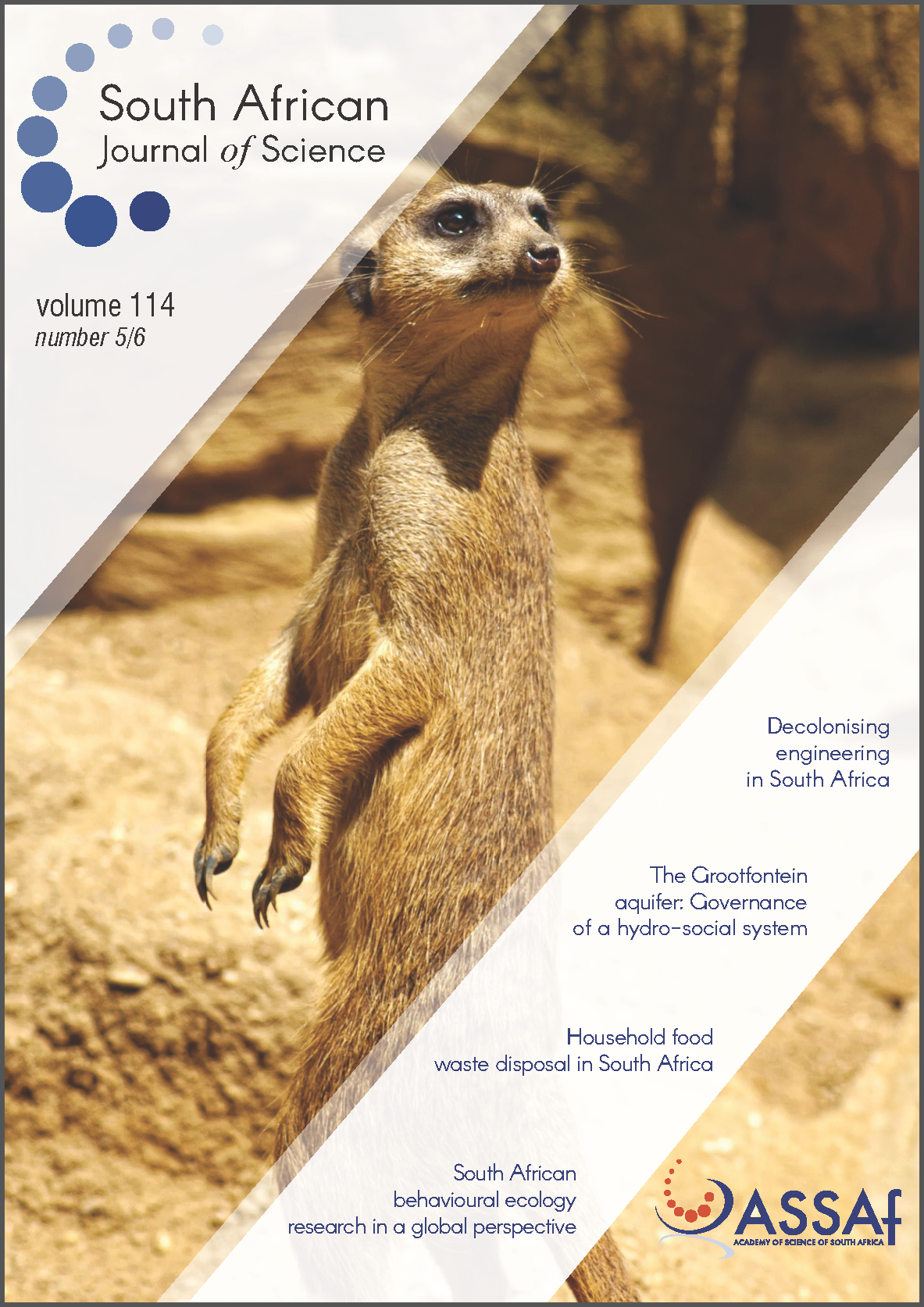Arable agriculture changes soil microbial communities in the South African Grassland Biome
DOI:
https://doi.org/10.17159/sajs.2018/20170288Keywords:
land use, grassland, agriculture, microbial diversity, next-generation sequencingAbstract
Many studies, mostly in temperate regions of the northern hemisphere, have demonstrated that agricultural practices affect the composition and diversity of soil microbial communities. However, very little is known about the impact of agriculture on the microbial communities in other regions of the world, most particularly on the African continent. In this study, we used MiSeq amplicon sequencing of bacterial 16S rRNA genes and fungal ITS regions to characterise microbial communities in agricultural and natural grassland soils located in the Mpumalanga Province of South Africa. Nine soil chemical parameters were also measured to evaluate the effects of edaphic factors on microbial community diversity. Bacterial and fungal communities were significantly richer and more diverse in natural grassland than in agricultural soils. Microbial taxonomic composition was also significantly different between the two habitat types. The phylum Acidobacteria was significantly more abundant in natural grassland than in agricultural soils, while Actinobacteria and the family Nectriaceae showed the opposite pattern. Soil pH and phosphorus significantly influenced bacterial communities, whereas phosphorus and calcium influenced fungal communities. These findings may be interpreted as a negative impact of land-use change on soil microbial diversity and composition.
Significance:
- This report is the first of the effect of land-use changes on the diversity of the soil microbial communities in African grassland soils.
- Land-use changes influence the diversity and structure of soil microbial communities in the Grassland Biome of South Africa.
- This study serves as a baseline for future studies on South African soil microbial diversity
Downloads
Published
Issue
Section
License

All articles are published under a Creative Commons Attribution 4.0 International Licence
Copyright is retained by the authors. Readers are welcome to reproduce, share and adapt the content without permission provided the source is attributed.
Disclaimer: The publisher and editors accept no responsibility for statements made by the authors
How to Cite
- Abstract 1258
- PDF 1004
- EPUB 274
- XML 292
- Supplementary Material 324











.png)